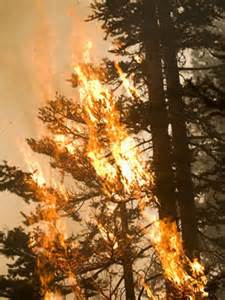By Julia Rosen
Scientists can learn a great deal about other astronomical questions using the light from GRBs. Gamma ray photons are energetic enough to traverse the entire universe, so they carry information about the farthest — and thus, oldest — corners of the cosmos. And that makes them extremely useful for studying things like the history of the stars.
Giant stars have relatively short lifetimes and produce GRBs when they die. That allows astronomers to use GRBs to reconstruct star formation and test different ideas about the early evolution of the universe, says Rosalba Perna, an astrophysicist at Stony Brook University who collaborates often with Davide Lazzati, OSU professor of physics. “Different dark-matter models make different predictions for when the first stars formed,” she says. “It actually has much broader implications.”
![]() Scientists also use GRBs to probe the composition of other galaxies. The same way shining a light through a pail of seawater illuminates floating critters and bits of sand, GRBs reveal the stuff of the cosmos. As light from a GRB passes through a galaxy, some of it is absorbed, creating a spectrum that reveals the chemical makeup and structure of the galaxy. “At that point, you don’t even care what the source is — it could be anything,” Perna says. GRBs just happen to work well because they are bright and often distant.
Scientists also use GRBs to probe the composition of other galaxies. The same way shining a light through a pail of seawater illuminates floating critters and bits of sand, GRBs reveal the stuff of the cosmos. As light from a GRB passes through a galaxy, some of it is absorbed, creating a spectrum that reveals the chemical makeup and structure of the galaxy. “At that point, you don’t even care what the source is — it could be anything,” Perna says. GRBs just happen to work well because they are bright and often distant.
GRBs can and do happen in our own galaxy, and scientists think one could devastate life on Earth if it exploded nearby. However, because there are many more stars outside of our galaxy than within it, faraway explosions are more common.
Learn more about Lazzati’s research at Waiting for Starlight.



